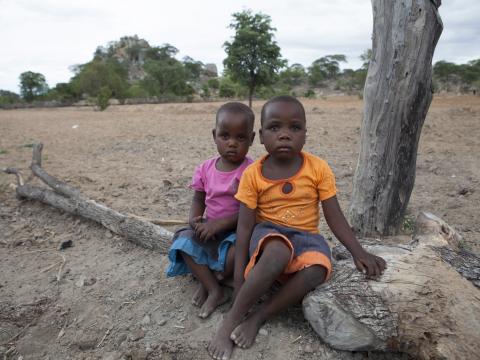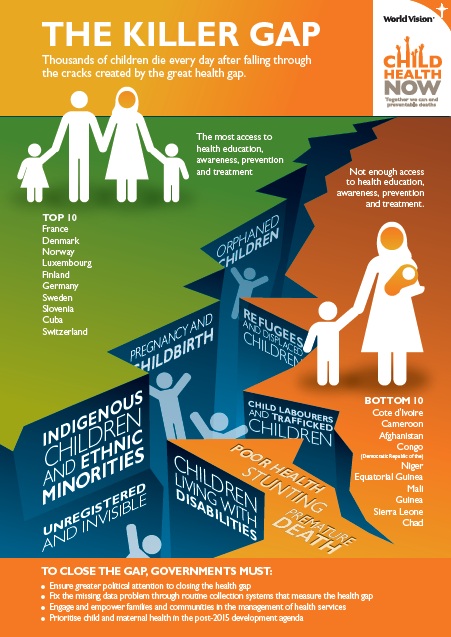New global index exposes gaps in ‘health wealth’

- Millions of children fall through the cracks every year, despite global progress, says aid agency
- Report exposes the gap between health rich and health poor
A ‘devastating’ gap exists between the health rich and health poor in every country, contributing to the deaths of thousands of children every day, a report released this morning by World Vision finds.
The Killer Gap: A Global Index of Health Inequality for Children (Download here) assesses 176 countries around the world according to the size of the gap between those who have access to good health and those who don’t.
“It’s a horrifying reality that in today’s world, when we have the knowledge, resources and tools to provide quality maternal, newborn and child health for all, that so many children continue to pay the price for the great gap in global health, with their lives,” said Andrew Hassett, World Vision’s international campaign director. “Our Index shows that a gap exists in every country, but some of the results are particularly surprising.”
The ten countries with the smallest gaps, according to World Vision’s Index, are France, Denmark, Norway, Luxembourg, Finland, Germany, Sweden, Slovenia, Cuba and Switzerland. The ten countries with the largest gaps are Chad, Sierra Leone, Guinea, Mali, Equatorial Guinea, Niger, the Democratic Republic of Congo, Afghanistan, Cameroon and Cote d’Ivoire. Seven of the ten countries with the greatest health gaps are among the poorest countries in the world, but three are middle income.
“Over the past 20 years, we’ve made a lot of progress – the number of children under the age of five dying every year has fallen dramatically. But it’s still too high – 19,000 every day – and this report looks at one reason why this is,” said Hassett.
“In achieving this and tackling global poverty and poor health, governments and organisations have reached those who are easiest to get to, but in many cases this has meant a devastating increase in the gap between the health rich and poor, with the most vulnerable children bearing the brunt.”
With two years until the deadline for the Millennium Development Goals, World Vision is using the report to urge governments to finish the job and leaders to take every step possible to close the gap on health in their countries.
“We know it can be done, as this report shows,” said Hassett. “But it’s now a matter of priorities – how important is reducing the preventable deaths of children? It’s time for leaders to show us.”
The report and Global Health Gap Index are being released by World Vision to mark the launch of its Close the Gap campaign, which this week will see hundreds of thousands of supporters in 45 countries asking political leaders and decision makers to do everything possible to achieve Millennium Development Goals 4 and 5, tackling child and maternal health.
NOTES
- The Global Health Gap Index, in World Vision’s The Killer Gap report, ranks 176 countries based on four criteria measuring health outcomes.
- World Vision is launching a week of mobilisation – “Close the Gap” – in 45 countries, with public events to call on leaders to help close the health gap
- Close the Gap is part of World Vision’s five-year Child Health Now campaign, aiming to end preventable child deaths.
